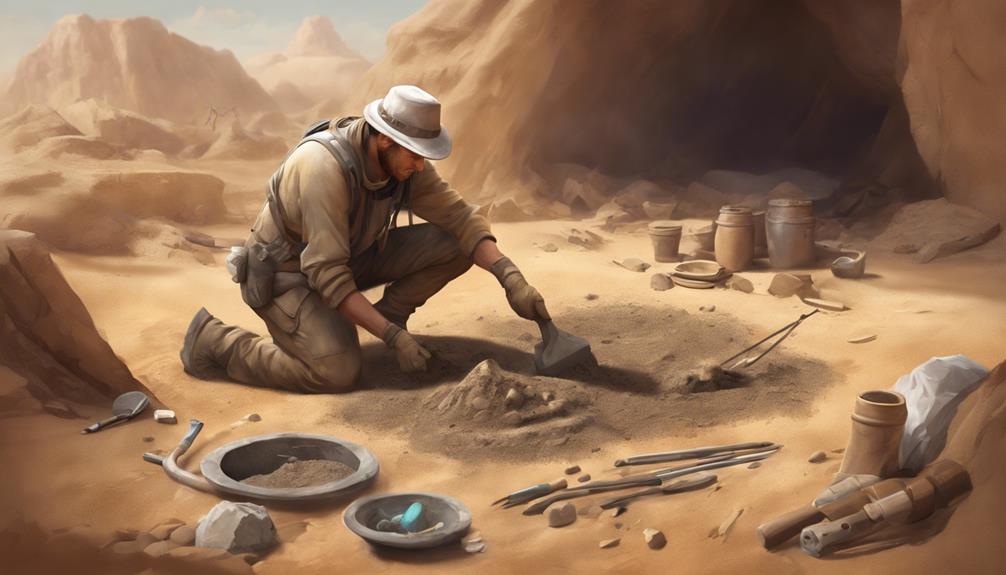Archaeologists, pillars of historical exploration, are experts dedicated to unraveling the mysteries of our past through meticulous study and analysis of ancient artifacts and sites. With a keen eye for detail and a passion for uncovering the secrets buried beneath the Earth's surface, these professionals employ a variety of methods to shed light on bygone civilizations and societies. Their work not only preserves our heritage but also provides invaluable insights into the human experience throughout the ages. But what exactly does an archaeologist do beyond excavating artifacts and deciphering ancient texts?
Key Takeaways
- Archaeologists conduct meticulous fieldwork, artifact analysis, and research to interpret past civilizations.
- They employ precise excavation and preservation techniques to study artifacts and maintain historical integrity.
- Utilizing exploration and survey methods, archaeologists uncover ancient sites using advanced technology and predictive models.
- Data analysis and interpretation in archaeology involve statistical sampling, artifact analysis, and reconstructing historical contexts for insights.
The Role of Archaeologists
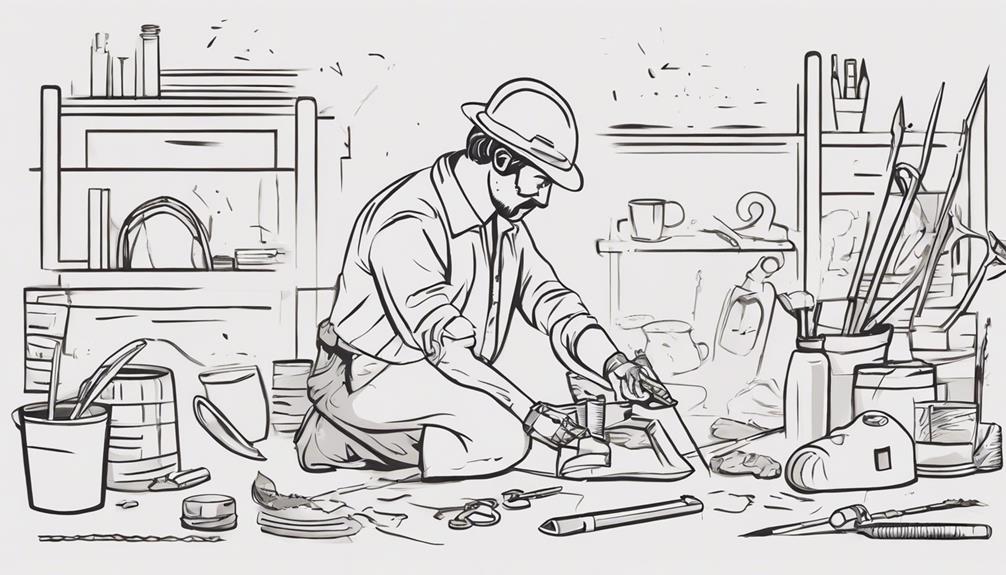
Archaeologists play a pivotal role in the field of archaeology through their meticulous fieldwork, artifact analysis, data interpretation, and research endeavors. Their work begins with surveying and excavating archaeological sites, where they carefully record and document findings using maps, photographs, and detailed records. Artifact analysis is a crucial aspect of their role, involving the study of materials, craftsmanship, and styles of artifacts to glean insights into past societies. Data interpretation is equally essential, as archaeologists analyze the spatial distribution of artifacts to reconstruct past human behaviors and activities. Furthermore, research and publication are integral components of an archaeologist's responsibilities, requiring them to conduct thorough research, publish their findings, and present their work at conferences to contribute to the broader archaeological knowledge base. Through these systematic methods and practices, archaeologists piece together the puzzle of human history, shedding light on civilizations long gone.
Uncovering Ancient Artifacts
Archaeologists employ meticulous excavation techniques to carefully uncover ancient artifacts, such as pottery, tools, and structures. Following excavation, they utilize specialized preservation methods to protect and maintain the integrity of these artifacts. By studying these ancient objects, archaeologists gain valuable insights into past cultures, technologies, and societal practices.
Artifact Excavation Techniques
During artifact excavation, precise tools such as trowels are utilized for meticulous soil scraping to uncover ancient relics. Excavation involves utilizing various tools for digging, measuring, and analyzing unearthed artifacts. Methods like site surveying and satellite imagery are used to discover and locate archaeological sites for excavation. Archaeological predictive models help in pinpointing potential sites before excavation begins. Screening soil from excavation units is crucial for recovering small artifacts and ecofacts during the digging process.
- Trowels for precise soil scraping
- Utilization of various excavation tools
- Site surveying and satellite imagery for site location
- Archaeological predictive models for identifying potential sites
Artifact Preservation Methods
Careful preservation methods are essential in the process of uncovering ancient artifacts to prevent damage and ensure their longevity. Artifact preservation involves meticulous excavation, documentation, and handling to safeguard these historical objects. Specialized tools such as brushes, trowels, and screens are utilized during excavation to delicately recover artifacts without causing harm. Preservation methods encompass stabilizing fragile artifacts, removing debris, and shielding them from environmental factors that could lead to deterioration. Archaeologists employ techniques like labeling, cataloging, and storing artifacts in controlled environments to prolong their lifespan. Additionally, proper storage, conservation treatments, and regular monitoring are crucial for maintaining artifacts in optimal condition for future research and display purposes.
Techniques for Site Exploration
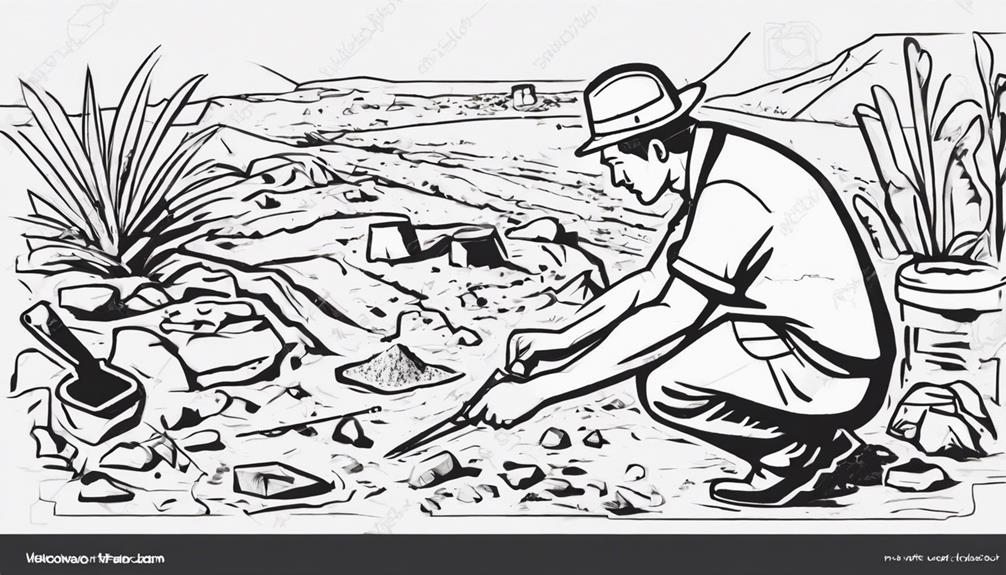
Utilizing advanced surveying techniques and satellite technology is essential for effectively exploring archaeological sites. To uncover historical sites and gather valuable data, archaeologists rely on a combination of modern tools and traditional methods. Here are some key techniques used in site exploration:
- Surveying: Archaeologists conduct detailed surveys using tools like GPS and LiDAR to map out sites accurately and identify potential areas of interest.
- Satellite Technology: Satellite imagery provides archaeologists with a broader perspective, allowing them to detect hidden features, monitor site changes, and plan excavation strategies more efficiently.
- State Historic Preservation Offices: These offices maintain crucial documentation files on archaeological sites, offering researchers valuable insights and background information for exploration.
- Site Reports: Previous archaeological investigations produce site reports that serve as valuable resources for understanding the history and significance of a site, guiding current exploration efforts.
Analyzing Archaeological Data
In the realm of archaeology, the analysis of archaeological data serves as a fundamental pillar in unraveling the complexities of past human civilizations. Through meticulous data analysis techniques such as carbon dating, pollen analysis, and geoarchaeology, archaeologists can interpret archaeological data to understand various aspects of past human behaviors. By examining artifacts, ecofacts, and features, archaeologists can determine occupation periods, trade networks, subsistence strategies, and social structures of ancient societies.
Comparing and contrasting data from different sites allows archaeologists to draw broader conclusions about human societies, shedding light on the evolution of cultures, technological advancements, and interactions with the environment. This comprehensive analysis of archaeological data not only provides insights into specific historical contexts but also contributes to the broader understanding of how civilizations have developed over time. Ultimately, the interpretation of archaeological data plays a crucial role in reconstructing the past and piecing together the intricate puzzle of human history.
Preservation of Historical Collections
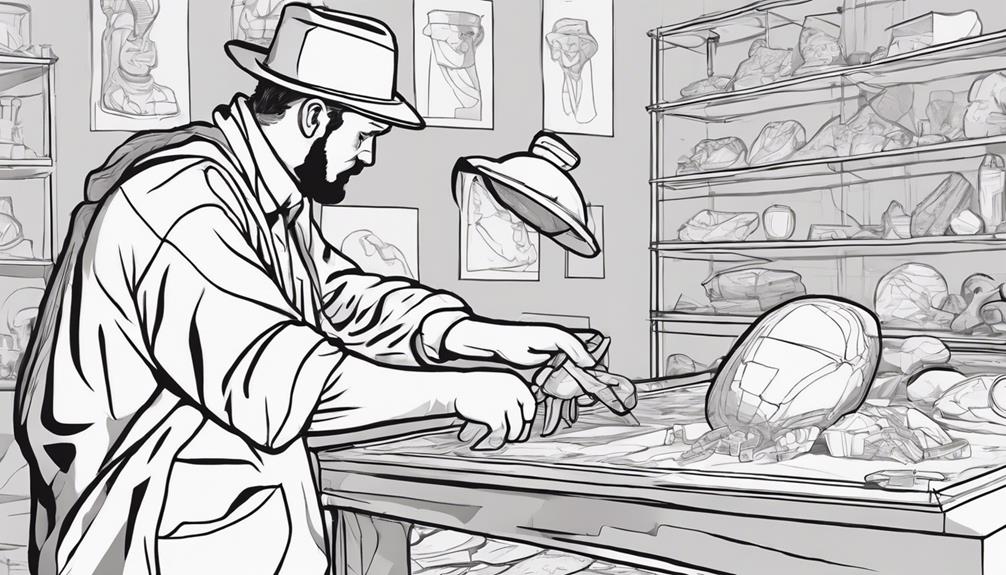
Archaeologists play a crucial role in safeguarding historical collections through meticulous documentation and preservation practices. When it comes to the preservation of historical collections, archaeologists employ various techniques to ensure the longevity and integrity of artifacts and materials. Here are key aspects of their preservation efforts:
- Documentation: Archaeologists meticulously document artifacts, sites, and their contexts to provide a comprehensive record for future reference and research.
- Storage Techniques: Proper storage techniques are utilized to prevent deterioration and damage to historical materials, ensuring their physical integrity over time.
- Labeling and Cataloging: Preservation efforts include labeling, cataloging, and organizing collections in a systematic manner to facilitate easy access and research for scholars and historians.
- Conservation Treatments: Archaeologists implement conservation treatments to stabilize and restore artifacts, employing scientific methods to ensure the long-term preservation of these historical treasures.
Archaeological Fieldwork Methods
Archaeological fieldwork methods encompass a variety of essential techniques such as excavation, surveying, and data analysis. Excavation techniques involve meticulous soil scraping and artifact analysis using specialized tools like trowels. Survey methods include site discovery through satellite technology and predictive modeling to identify potential archaeological sites.
Excavation Techniques Overview
Excavation techniques in archaeology involve the systematic establishment of site grids to facilitate precise digging procedures. To ensure efficient and accurate excavation, archaeologists utilize statistical sampling to select units for digging. Screening soil from excavation units aids in the recovery of small artifacts and ecofacts, providing valuable insights into past human activities. Recording precise artifact locations both horizontally and vertically is crucial for understanding the context in which items were found. Following excavation, artifacts undergo lab analysis, where researchers can further investigate their composition, age, and significance in answering questions about ancient cultures.
Survey Methods Explained
After completing the meticulous excavation process, archaeologists turn their focus to survey methods as a crucial component of archaeological fieldwork, aiming to systematically examine landscapes for the identification and documentation of archaeological sites. Survey methods in archaeology encompass ground surveys, aerial surveys, and geophysical surveys. Ground surveys involve physically walking over an area to visually inspect and record surface artifacts and features. Aerial surveys utilize drones, satellites, or planes to capture images of archaeological sites from above, providing a broader perspective of the landscape. Geophysical surveys employ tools like ground-penetrating radar to detect subsurface anomalies that may indicate the presence of buried archaeological features. These methods collectively aid researchers in locating and mapping archaeological sites within various landscapes efficiently.
Data Analysis Approaches
Data analysis approaches play a pivotal role in deciphering the complexities of archaeological fieldwork methods, facilitating the interpretation of historical narratives embedded within excavated artifacts and ecofacts. To achieve this, archaeologists employ various strategies:
- Statistical Sampling: Utilized to select excavation units systematically.
- Artifact Analysis: Small artifacts and ecofacts are recovered during excavation and analyzed in the lab.
- Occupation Periods: Data analysis helps determine the duration and timing of human occupation at a site.
- Trade Relations: Studying artifact distributions and types aids in understanding ancient trade networks.
Effective data analysis methods are crucial for interpreting the past accurately and shedding light on the intricate details of human history.
Interpreting Historical Context
The analysis of archaeological artifacts, structures, and landscapes plays a crucial role in uncovering and deciphering the historical context of past civilizations. Archaeologists interpret these remnants to reconstruct human activities, understand cultural practices, social structures, and technological advancements of ancient societies. By piecing together the puzzle of historical context, archaeologists can gain insights into how past civilizations lived, interacted, and evolved over time.
Interpreting historical context involves more than just identifying objects; it requires a deep understanding of the cultural and social significance of these artifacts. Through this process, archaeologists can paint a vivid picture of the past, shedding light on the lives, beliefs, and practices of ancient civilizations. By analyzing the historical context, archaeologists can create narratives that bring the past to life, providing a window into the rich tapestry of human history. This meticulous interpretation of historical context is fundamental to the work of archaeologists and contributes significantly to our understanding of the complexities of ancient civilizations.
Specializations Within Archaeology
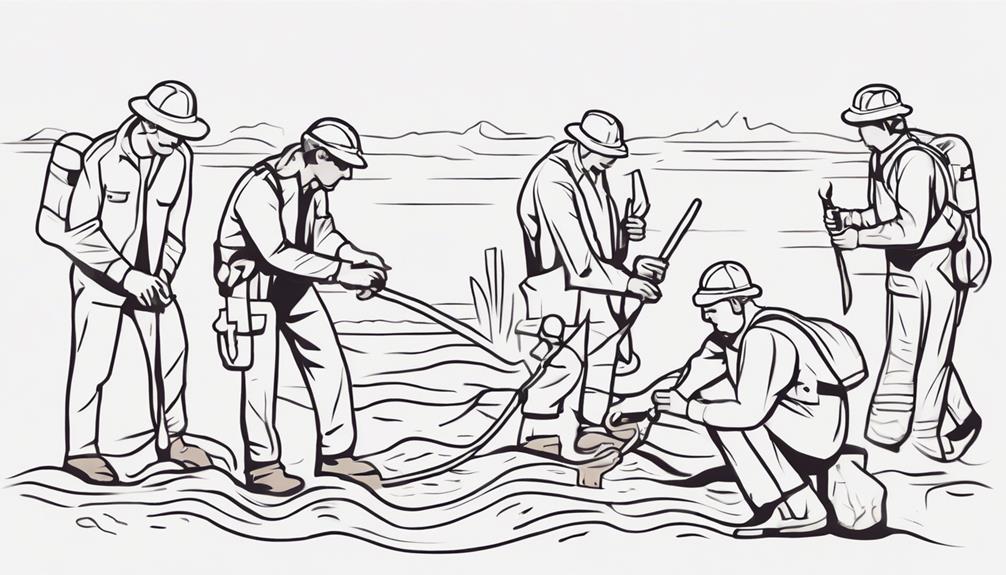
Archaeologists specialize in various fields such as historical archaeology, zooarchaeology, bioarchaeology, maritime archaeology, and industrial archaeology. These specializations allow archaeologists to focus on specific aspects of the past, whether it be human-animal interactions, health and lifestyles of past populations, maritime history, or technological advancements in industrial societies. By honing their expertise in these specialized areas, archaeologists contribute valuable insights into different aspects of human history and culture.
Field Vs. Lab
Within the field of archaeology, specialists focus on either conducting fieldwork or working in controlled laboratory settings to contribute to the comprehensive understanding of past civilizations. Here are some key differences between field archaeologists and lab archaeologists:
- Field Archaeologists:
- Conduct surveys, excavations, and site documentation in outdoor settings.
- Use tools like trowels and screens for excavation.
- Interpret cultural contexts on-site.
- Lab Archaeologists:
- Focus on artifact analysis, preservation, and research in indoor environments.
- Utilize equipment for artifact cleaning and analysis.
- Engage in detailed artifact classification and dating techniques.
Both fieldwork and lab analysis are crucial, as they complement each other in generating comprehensive archaeological interpretations.
Cultural Materials
Specializing in the study of cultural materials, archaeologists focus on examining artifacts, structures, and objects left behind by previous human societies. These specialists analyze material remains to understand cultural practices, beliefs, technologies, and social organization. Within cultural archaeology, experts interpret the significance of pottery, tools, buildings, art, and other artifacts in their cultural contexts. Employing scientific methods, they date, analyze, and interpret the meaning of cultural materials found in archaeological sites. Specializations within this field may include studying ceramics, lithics, metal objects, architectural features, and other cultural artifacts. By delving into these material aspects of past societies, cultural materials archaeologists uncover valuable insights into the diverse expressions of human creativity, organization, and belief systems.
Archaeologist's Contribution to History
Studying physical objects, places, and landscapes interacted with by humans, archaeologists significantly contribute to the historical narrative through their meticulous investigations. This contribution is vital in unraveling the complexities of past societies and understanding the evolution of cultures over time. The following points elucidate how archaeologists enrich history through their dedicated work:
- Traces of Human Activities: Archaeologists delve into a wide array of human activities by examining artifacts and structures, shedding light on the daily lives, customs, and technologies of past civilizations.
- Insights into Cultures: By analyzing cultural artifacts, archaeologists can decipher societal norms, religious practices, artistic expressions, and economic systems, providing a comprehensive view of diverse cultures and their intricacies.
- Specialized Perspectives: The diverse specializations within archaeology, such as historical archaeology and zooarchaeology, offer nuanced insights into specific aspects of the past, enriching historical narratives with specialized knowledge.
- Materiality and Significance: Through a focus on material remains, archaeologists highlight the importance of artifacts in shaping human history, emphasizing their role in cultural transmission, innovation, and societal development.
Future of Archaeological Discoveries
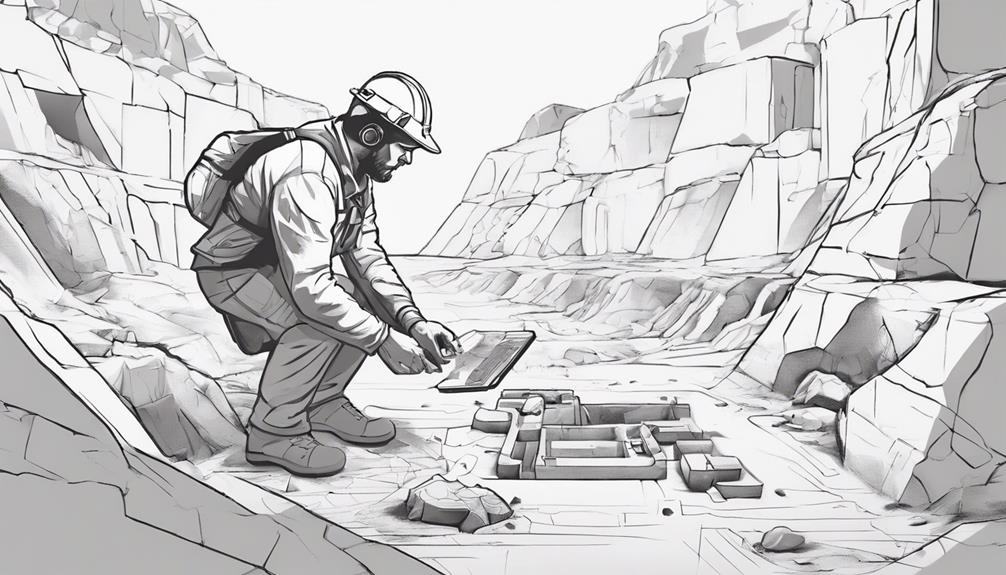
Exploring the potential trajectory of archaeological research, upcoming discoveries are poised to revolutionize our understanding of the past through innovative methodologies and interdisciplinary collaborations. One significant focus of future archaeological endeavors is expected to be underwater sites, driven by rising sea levels and a growing interest in maritime archaeology. Technological advancements such as LiDAR and ground-penetrating radar are likely to play pivotal roles in transforming how archaeological sites are identified and studied, offering unparalleled precision and efficiency.
Moreover, collaboration with indigenous communities and descendant groups is set to shape the future of archaeological research, ensuring a more inclusive and ethically responsible approach, particularly in terms of repatriation efforts. With climate change exerting increasing pressure on archaeological sites worldwide, there is an urgent need for new strategies to preserve and investigate these locations in the face of environmental challenges.
Furthermore, the evolution of digital archaeology tools and techniques will provide fresh avenues for analyzing and interpreting archaeological data, opening up exciting possibilities for enhancing our comprehension of the past through cutting-edge technological applications.
Frequently Asked Questions
What Do Archaeologists Actually Do?
Archaeologists engage in a multifaceted approach to uncovering the past, involving field excavation to unearth artifacts, followed by meticulous artifact analysis to gain insights into ancient cultures. Through cultural interpretation, they reconstruct historical narratives. Additionally, archaeologists prioritize site preservation, collaborate on research projects, integrate technology for data analysis, and engage in public outreach to share discoveries. This comprehensive approach allows them to contribute valuable knowledge to the field of archaeology.
What Are 5 Things That Archaeologists Do?
In the field of archaeology, professionals engage in various activities to advance understanding of past civilizations. These tasks include field excavation to uncover artifacts, artifact analysis to decipher their historical significance, site preservation to protect cultural heritage, cultural interpretation to understand ancient societies, research collaboration to enhance knowledge, public outreach to educate the community, and technology integration for efficient data collection and analysis. These endeavors collectively contribute to the interdisciplinary nature of archaeology.
What Are the 3 Types of Archaeologist?
The three types of archaeologists are Classical Archaeologists, Prehistoric Archaeologists, and Historical Archaeologists. Classical Archaeologists focus on ancient Greek and Roman civilizations, while Prehistoric Archaeologists study societies before the development of writing. Historical Archaeologists combine archaeological methods with historical research to understand past societies. Each type plays a crucial role in cultural preservation, historical interpretation, site excavation, artifact analysis, field research, laboratory work, and public outreach in the field of archaeology.
Is Archeology a Good Career?
Archaeology offers job satisfaction through hands-on historical analysis and artifact interpretation. Career growth is stable, with around 800 new jobs annually and research opportunities in diverse environments. Fieldwork challenges and physical demands are part of the job, but transferable skills like attention to detail and communication are essential. Salary expectations vary, but industry demand for archaeologists remains strong, making it a good career choice for those passionate about history and exploration.
Conclusion
In conclusion, archaeologists play a critical role in uncovering and interpreting human history and culture through the analysis of artifacts and sites. Despite the advancements in technology, some may argue that archaeology is a slow and meticulous process. However, the detailed and methodical approach of archaeologists ensures the accuracy and preservation of historical information for future generations to learn from and appreciate.
